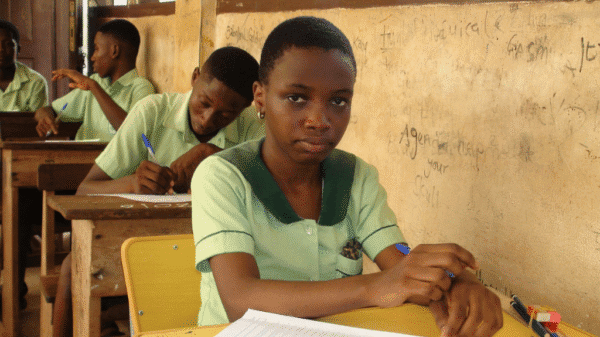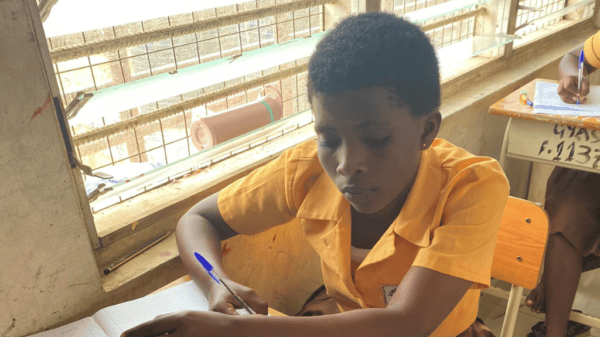Key takeaways
- You must choose six schools in order of preference, following the category rules (A–D).
- Placement is based on merit—your aggregate score, number of grade 1s, raw scores, core subject performance, and available space in your chosen schools and programs.
- There are three placement types: automatic, self-placement, and manual placement.
In this guide, we explain the school selection process for Basic Education Certificate Examination (BECE) graduates in Ghana who wish to enter Senior High Schools (SHS), Senior High Technical Schools (SHTS), or Technical and Vocational Education and Training (TVET) institutions.
Before getting started
Understanding the key requirements and structure of the placement system is essential before selecting schools and programmes. Let’s look at that first.
Eligibility and requirements
To be eligible for admission into any public secondary-cycle institution in Ghana, you must be a BECE graduate, either from a public or private school. Foreign candidates may also apply but must follow a separate process established by the Ghana Education Service (GES).
Categories, clusters, and restrictions
Secondary schools in Ghana are grouped from categories A to D, with several STEM, TVET, SHS, and SHTS institutions to choose from.
Within these categories are cluster schools. These are alternative options within the same category the candidate will be willing to attend if the primary selection (first choice) is unavailable.
Each category has specific restrictions on how many schools a student can choose from:
| Category | Restriction/information to note |
| A | Can select only one school |
| B | Can choose up to two schools |
| C | Can choose up to five schools |
| D | One compulsory day school within 16 km of their JHS for the sixth choice |
| Appendix 1 | Detailed list of Technical programmes for SHTS |
| Appendix 2 | Detailed subjects related to the programmes in Appendix 1 |
| Appendix 3 | Community-based boarding schools for the sixth choice |
| Appendix 4 | List of cluster schools for categories A, B, C and TVET schools. |
| Appendix 5 | Schools with provisions for students with special education needs |
Note: If you want to do only TVET programmes, you must select TVET schools for all your six choices.
How to choose a secondary school for placement?

To gain admission into a secondary school, select your preferred schools and wait for the GES CSSPS placements after the BECE results are released.
Here are the guidelines for choosing your preferred secondary schools:
Step #1: Choosing the main schools
You must choose six schools in total, following the category restrictions.
Check that your school choices are listed in order of preference, from your first choice to the one you prefer the least.
You must also:
- Select a school with compulsory day status from category D or any community boarding school in Appendix 3 for your sixth choice.
- Add the programme of study and residential status(day/boarding) for each school you choose.
Choosing a Category D school
If you choose a school from Category D, it must be close to your home so that you can easily go to school each day as a day student.
The school you choose for Category D can also be the same as one of your first five choices, but only if:
- The school is available as a Day option, and
- It is within your catchment area.
Note: Your catchment area is the geographic zone you’re allowed to attend based on where you live. GES defines that as “the geographical area from which a school primarily draws its students.”
For example, if you picked Achimota School as a boarding option earlier in any of your first five choices, and it is close to your home, you can again choose Achimota School (Day) as your Category D option.
Step #2: Choosing from the cluster schools
You may have to indicate whether you wish to select a cluster school (Yes/No), as we’ve explained above.
If yes, you must choose a programme of study and a residential status for each cluster school choice.
While it’s not compulsory, we recommend choosing cluster schools so that if you’re not placed in your first six choices, you’ll get a chance from this list.
Step #3: Submitting your schools
Before submission, you must verify your choices with your parents or guardians and sometimes school teachers.
Once you’re sure of your school selections, submit them to your junior high school (JHS). Make sure to submit it within the given time frame.
BECE School placement methods

There are three placement methods available:
Automatic Placement (CSSPS)
The Computerised School Selection and Placement System (CSSPS) automatically places candidates based on their aggregate score, the available space in their selected programme and school, and residential status preferences.
It works by checking your aggregate score to see if your grades meet the requirement for the programme chosen for your first choice. If you do, it checks if space is available in your preferred residential status.
However, if that option is already full because other candidates with better grades got in first, the system moves on to your second choice.
This process continues until you are placed in a school. If none of the main choices are available, the system will evaluate the cluster schools you chose in the same order.
The CSSPS also uses a tie-breaker when too many students with the same grades compete for limited spaces in a programme or residential option. The parameters used are:
- The number of grade 1s: Students with more grade 1s are placed first.
- Raw scores: If grade 1s are tied, the system checks the raw scores from the best six subjects. The subjects with higher scores are placed next.
- Subject performance: If raw scores are tied, the system then evaluates performance in core subjects in this order: English, Mathematics, Integrated Science, Social Studies.
Self-placement
If the CSSPS does not place you, you can use the self-placement option through the CSSPS portal.
You’ll see a list of schools with available spaces based on your aggregate score and their locations. You can change your selected schools as often as possible until you enrol.
Manual placement
Manual placement is for candidates who fall under special cases. These include:
- Special and gifted students: Some schools have facilities and programmes specifically for students with special needs. Hence, these schools reserve some vacancies for such students, and the placement system allows re-entry only for them.
- Seminarians: Seminaries have a unique selection process. They conduct their own interviews and entrance exams, then submit a list of qualified candidates to GES, who handles the final placement.
- Protocol placement: These are vacancies for candidates linked to the school’s key stakeholders. The school heads submit the names of candidates for which they are offering protocol allocation to GES for processing.
FAQs
When can I choose the schools for my placement?
You can choose schools for placement after writing the BECE, usually between August and September.
What is the metric used for the placement?
The metrics used for placement include your aggregate score, number of grade 1s, raw scores, core subject performance, and the availability of space in your chosen schools, programs, and residential options.
How can I keep up to date with changes in the selection process?
You can keep up to date with changes in the selection process by visiting the official GES and CSSPS websites.
Conclusion
The BECE school selection and placement process can be daunting, but you can navigate it successfully with proper guidance, patience, and attention to the rules.
Following the outlined steps and staying informed through official channels will help ensure a smooth transition into the next stage of your academic life.
Have any questions? Please share it with us in the comments.











15 Comments. Leave new
Are BECE candidates suppose to choose 6 schools or 4 schools? And how many boarding and day schools?
You must choose six schools in order of preference, following the category rules (A–D).
Please mention the SHS School that study languages
Sorry Michael, we’re not sure what you mean.
please can you explain it to me?
Which part do you need help with, Michael?
How can I get the updated shs TVET list of schools their categories, program and more
Here’s the updated list of TVET schools.
Please can I get the last year or this year school selection register?
We’re working on it, and we’ll have a page soon with the full school selection register.
Thanks for the information and education.
Programs Code ,I don’t understand so send to me
Sorry Gideon. We’re not sure what you mean.
Please help me to get good grade 🙏please!!!
Hello Narh, we’d recommend reading our article on how to prepare and pass your BECE.